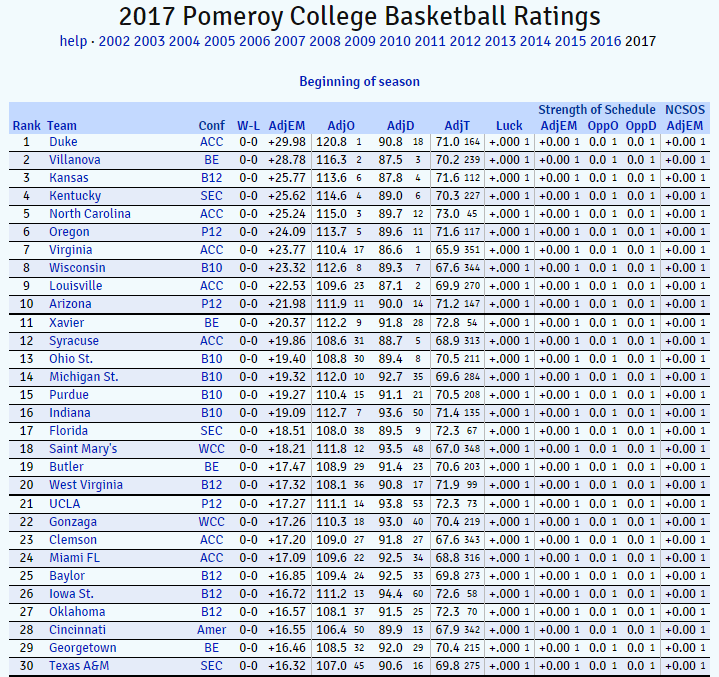- Joined
- Oct 7, 2012
- Messages
- 41,086
No equivalent for college.
Last edited by a moderator:
By registering with us, you'll be able to discuss, share and private message with other members of our community.
SignUp Now!StopThePumpFakesShav said:It looks like Pyth has been replaced by "Adjusted efficiency margin", which, using 2015 as an example, goes from +37 or so at the very top of the country to -38 at the very bottom.
In the new system, the effects of the two competing teams are considered to be additive rather than multiplicative. If Team A’s offensive efficiency is 10% higher than the national average and Team B’s defensive efficiency is 10% higher than the national average, then Team A’s offense when playing Team B would be expected to be 20% higher than the national average.
I’m not sure how basketball really works, but my hunch is that it’s probably closer to additive than multiplicative. For fairly normal teams, the distinction is nearly irrelevant. But at the extremes, it can matter. If Team A has an offense than is 120% of the national average and Team B has a defense 80% of the national average, it makes intuitive sense that Team A’s offense should be exactly average when it plays Team B. In the multiplicative framework Team A’s offense would be expected to be 96% of the national average, implying that a great defense is better than a great offense, which seems to conflict with reality.
Another benefit of the additive model is that it allows us to more easily separate the influence of offense and defense in making predictions so one could weight offensive rating more heavily. Preliminary research into this is promising, but for this season, offense and defense will be weighted equally until a more extensive investigation can be conducted.
Finally, there is the issue of home court advantage. For this iteration of the ratings I am using a flat 3.75 points for every game. It’s probably a little higher than reality since that value is what best calibrates predictions of the past 15 seasons, and we know that home court advantage has been on a subtle decline in recent years. It’s a high priority of mine to implement site-specific home-court advantage values by next season. It isn’t something that matters much in the long run, but it’s kind of a neat thing to have and hopefully I can discuss this more during the season.
